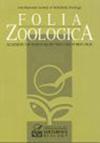Consistent demographic trends in Savi's pine vole between two distant areas in central Italy
Q2 Agricultural and Biological Sciences
引用次数: 5
Abstract
Abstract. The Savi's pine vole, Microtus savii is an Italian species living in grasslands, both natural and anthropogenic (i.e. agroecosystems) where it is generally considered a pest because it may damage crops and orchards. As for most rodent pests, the extent of the damage might depend on population density and temporal food availability (e.g. Brown et al. 2007, Jacob & Tkadlec 2010). However, data on demographic parameters are not available, making ecologically-based management strategies difficult to plan. Therefore, we conducted a study on Savi's pine vole demography for one year in two study areas in central Italy using capture-mark-recapture method. Density values ranged from 3 to 32 ind./ha, the highest population densities occurred in October, while the lowest occurred in February-April in both study areas. Turnover rates of both populations were very high, with time of residency usually no longer than two months. Juveniles' survival was constant in both study areas, but it differed between the two populations regarding adults. The two populations showed similar demographic trends along the year with relatively small intra-annual fluctuations. The breeding season covered the whole year in both areas. The results here presented contribute to add meaningful information about this poorly known species, and could be useful to plan population control strategies for this rodent in agroecosystems.意大利中部两个遥远地区萨维松田鼠的人口统计趋势一致
摘要萨维松田鼠(Microtus Savi)是一种意大利物种,生活在草原上,自然和人为(即农业生态系统),它通常被认为是一种有害生物,因为它可能破坏庄稼和果园。对于大多数啮齿动物有害生物,损害程度可能取决于种群密度和食物供应时间(例如Brown et al. 2007, Jacob & Tkadlec 2010)。但是,由于没有关于人口参数的数据,因此难以规划以生态为基础的管理战略。因此,我们在意大利中部的两个研究区采用捕获-标记-再捕获的方法对萨维松田鼠进行了为期一年的人口统计学研究。密度值在3 ~ 32个/ha之间,10月密度最高,2 ~ 4月密度最低。这两种人口的流动率都很高,居住时间通常不超过两个月。幼鱼的存活率在两个研究区域都是恒定的,但在两个种群中,成年鱼的存活率有所不同。这两个种群全年的人口趋势相似,年内波动相对较小。这两个地区的繁殖季节覆盖全年。本文的研究结果有助于增加对这一鲜为人知的物种的有意义的信息,并可用于规划农业生态系统中这种啮齿动物的种群控制策略。
本文章由计算机程序翻译,如有差异,请以英文原文为准。
求助全文
约1分钟内获得全文
求助全文
来源期刊

Folia Zoologica
生物-动物学
CiteScore
1.70
自引率
0.00%
发文量
0
审稿时长
3 months
期刊介绍:
Information not localized
 求助内容:
求助内容: 应助结果提醒方式:
应助结果提醒方式:


